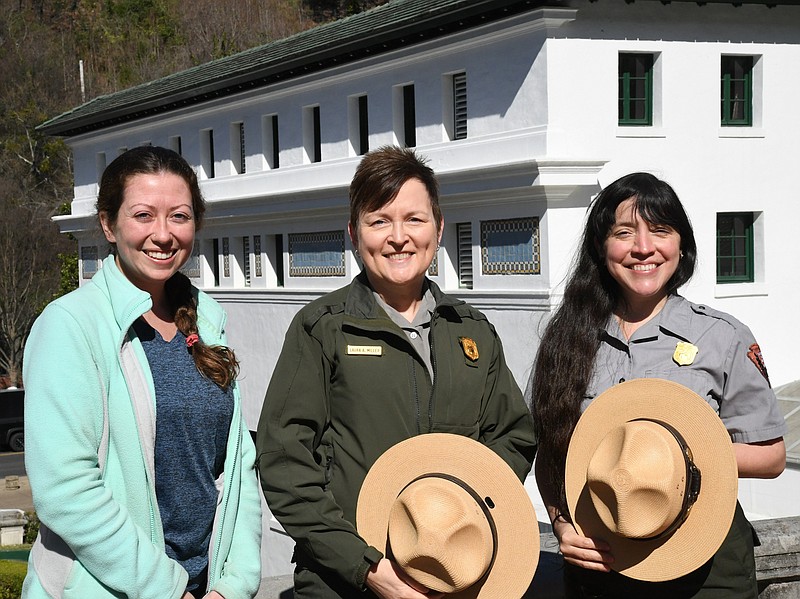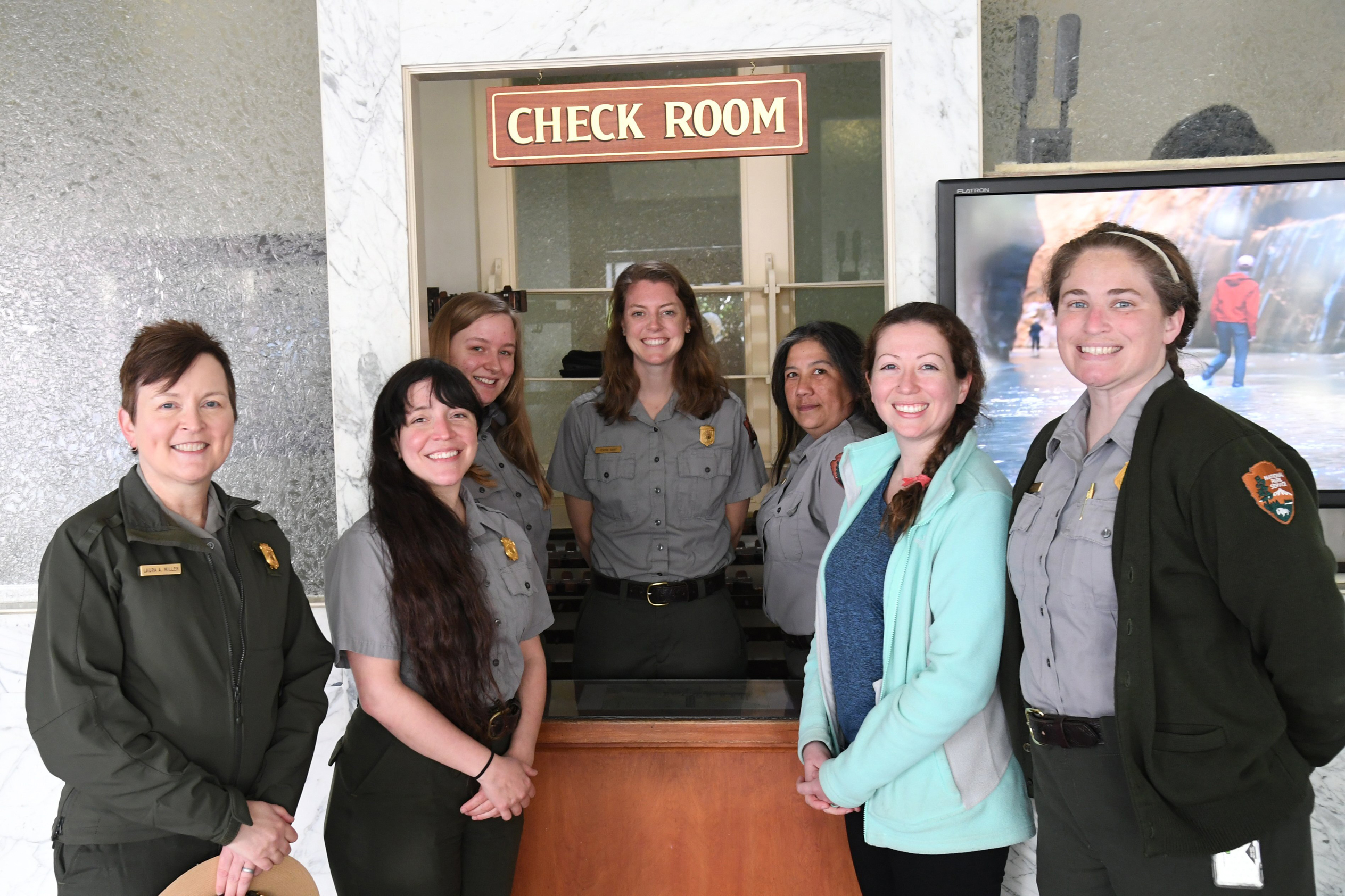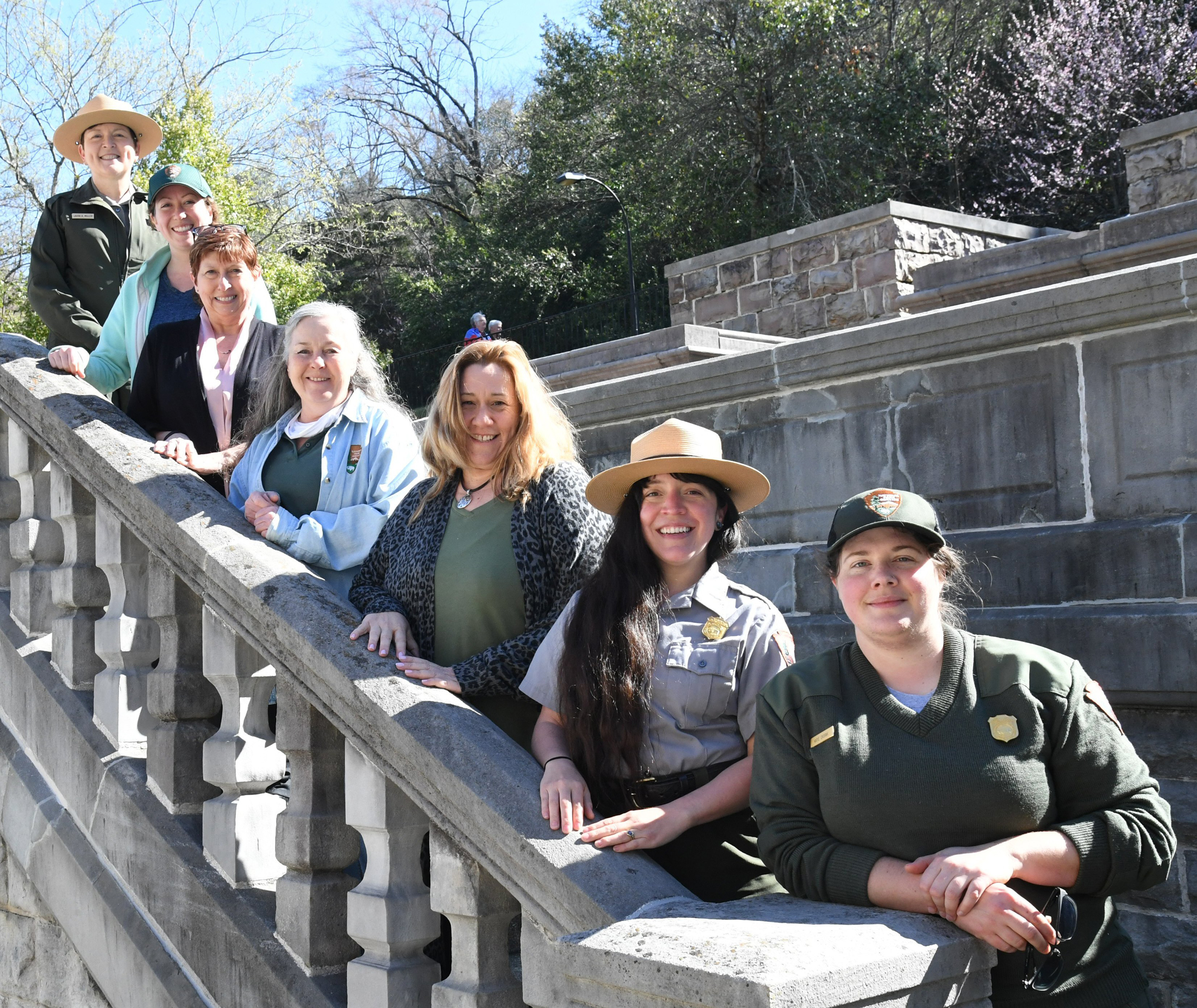Anyone from Hot Springs knows all about the thermal springs and historic bath houses on Bathhouse Row, 26 miles of hiking trails and scenic mountain roads all located in Hot Springs National Park. But what about the history behind the park?
Superintendent Laura Miller, Park Ranger Ashley Waymouth, and Tori Reichard, archaeologist, have extensive knowledge of the park and the history behind it.
Hot Springs National Park is "the first attempt at a national park," Reichard said. In 1820, before the National Park Service was created, the Arkansas Territorial Legislature requested that the springs and mountains be set aside as a federal reservation, according to the park's website. In 1832, President Andrew Jackson signed legislation to set aside the park as a federal reservation, meaning the establishment of HSNP predates Yellowstone National Park by 40 years.
The park is where the "Public Health Service first partnered with the Park Service to kind of keep tabs on safety and sanitation and things like that," Reichard said.
As an archaeologist, part of Reichard's job is "to make sure that the park is staying in compliance with all of the federal cultural resources laws," she said. Those laws include the National Historic Preservation Act of 1966, Section 106, which requires federal agencies to identify and assess the effects their actions may have on historic resources.
"Sometimes I'm out doing survey work before a project is getting done to see if there's anything there that might get impacted," Reichard said. "Sometimes that means I'm making recommendations on how to minimize damage."
She said another important law the park has to follow includes Section 110 of the same law, which states federal agencies such as the National Park Service are responsible for knowing what is on their property to make sure they are protecting it appropriately.
Reichard is the only archaeologist at HSNP, which means the job relies solely on her to ensure the park is following these laws.
"When I have time and I'm not doing project-based things, I'm out in the woods, actually just surveying as much of the property as I can to figure out what we have here that we may not already know about."
Miller's responsibilities as superintendent of the park include "well, everything really," she said. "I'm ultimately responsible for everything, but we have a fantastic staff of people."
All three women said it was important for young girls to see females in roles like theirs.
"In a lot of ways, archaeology has been a good old boy's club for a very long time and that's changed a lot, especially in the past few years, but it's not always an easy place for women to walk into. It's a lot of physical labor, you'll get comments like 'Oh, that little girl can't do that work,' like, I've actually had people say things like that to me. It's like, 'watch me.'"
"When I first came to the National Park Service, in the early 2000s, we had six national park sites in Arkansas," Miller said. "The superintendents were all male. Just a couple of years ago, when I took this job, we now have seven national park sites in Arkansas. Five of them have female superintendents, two of them African American women, one of them a member of the Cherokee Nation."
Miller started as HSNP's superintendent in August 2018. She said she grew up in Bryant and has worked in several national park sites throughout the state.
She worked at Little Rock Central High School National Historic Site for around 10 years. She then became the superintendent of the President Bill Clinton Birthplace Home, when it became a National Historic Site. Finally, before coming to Hot Springs, she was the deputy superintendent at Buffalo National River.
Waymouth said being a park ranger wasn't even something she considered when she was younger.
"We get (visitors) from all backgrounds, all walks of life," she said. "And to have somebody in this role that looks like you is empowering and it makes it feel like that's possible. I especially feel that as a Hispanic woman. I didn't know any Hispanic park rangers when I was growing up."
Shortly after Waymouth graduated with her undergraduate degree, she started working in outdoor education and driving glass bottom boats on a spring-fed lake in Texas.
"I loved it so much. I was inspired to create community celebrations about the ecosystems there and did that for many years before I thought, 'You know what, I want to do something bigger. I want to try something different.' And I scored my first job at Crater Lake National Park."
After that, she was brought to Hot Springs for the park's 100th-anniversary celebration. After the celebration, she was kept on as a park ranger and currently serves as the acting interpretation program manager.
Part of Waymouth's job includes managing the rangers who do visitor services and present ranger programmings
"Every day for me is a little bit different," she said. "I truthfully do a lot of behind-the-scenes work to make sure that the division operates and runs efficiently."
Waymouth started at the park in March 2020, right before lockdowns started occurring because of the COVID-19 pandemic.
"My first day was a Monday and then we closed the park that same Wednesday," she said.
Miller said the park was only closed completely for a couple of weeks.
"We were really fortunate here in this park because I think it affected us less in terms of operations than it may have in some other places," she said. "We're kind of spread out throughout the park. We could spread out and keep our distance and that enabled us to come back to the park."
Reichard has been working for HSNP for over two years as an archaeologist. The Virginia native has been moving around doing archaeology work for the past 10 years. But, she plans to stay in Hot Springs for "as long as they'll keep me," she said.
"It's a good place. There's a lot of good things to study here, a lot of stuff that hasn't been looked at and just a lot of opportunity to learn," she said.
When asked how long she plans to stay at HSNP, Miller said, "You never know what the future can bring, but what I can say is I love it here. I love living here and I love the people I work with. I don't see myself going anywhere anytime soon, that's for sure."
Originally from South Texas, Waymouth said she loves Hot Springs and plans to stay as long as she can.
"I really love working here at Hot Springs National Park and I love the city of Hot Springs," she said. "I feel like Arkansas and the surrounding area has a lot to offer."
Reichard said one of the most important resources in HSNP includes the novaculite, also called Arkansas stone, quarries.
"We have novaculite quarries in the park going all the way back into the middle archaic period," she said. "In occupation, probably about 10,000 to 12,000 years old. This is one of only a couple places on earth that you can find novaculite."
Reichard said she went into archaeology because of her love for history and being outside. She said her reasons changed after learning more about the field.
"I realized that what I actually really love about it is that it gives the chance to learn things about history that aren't well documented," she said.
"You don't really learn about the day-to-day life of impoverished people from history books and there's not going to be a lot of documentation if the people were illiterate, you know, they're not writing letters. So, this gives us a chance to kind of piece together what things like that would have actually been like."
While Reichard discovers the history behind the park, it's part of Waymouth's job to tell visitors about the history.
"It's our responsibility as the interpretation team to tell our park story and to make this place come to life for people that maybe otherwise wouldn't know it," Waymouth said.
All three women said HSNP was a special place.
"This is not something that everyone gets to have," Reichard said. "There's not a place where people can just come hike and explore and learn about history."
"You can hike not too far down the trail and feel like you're in the wilderness almost because the city just kind of disappears when you get around some of the corners and on the other side of hills," Miller said. "Or, you can have a very urban experience on Bathhouse Row and see the historic buildings and go in and still experience them in different ways."
"Here at Hot Springs, we've just had this beautiful unfolding of events to allow water to naturally travel deep into the aquifer and get heated by the core of the earth, by the geothermal gradient before emerging, so our water comes out clean," Waymouth said.


